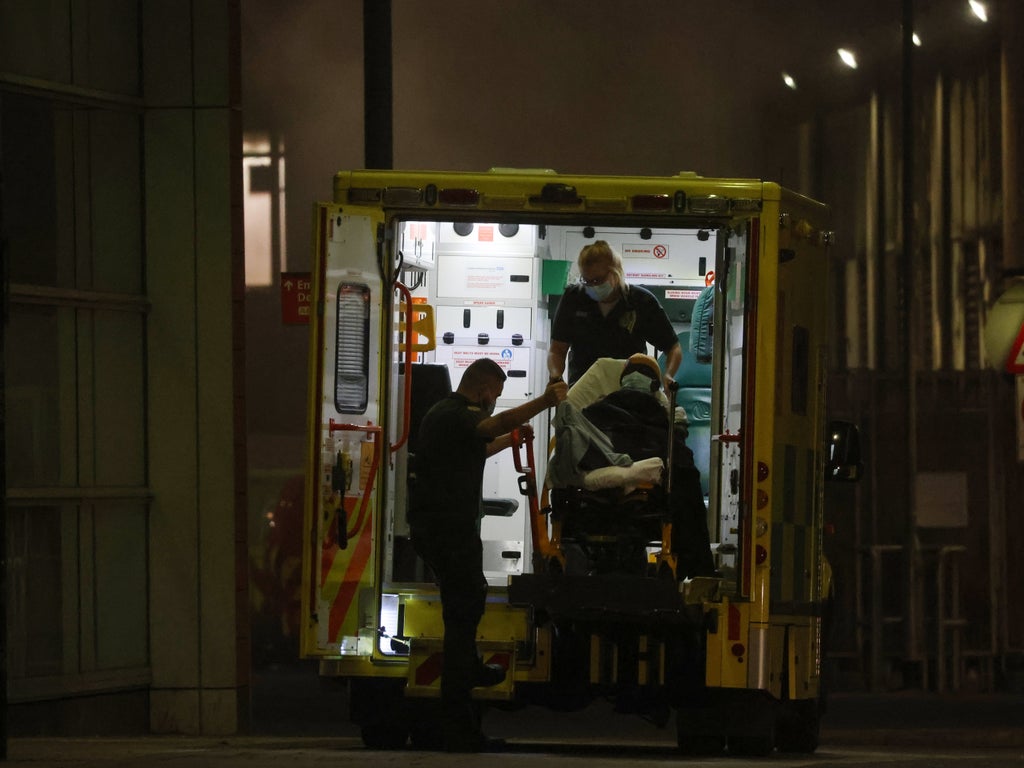London Covid patients up by 50% as hospital admissions rise nationally

The number of Covid patients in London hospitals has increased by almost 50 per cent within a week, with admissions on the rise across all but one region of England, new figures show.
The data, released by the NHS, featured in a briefing presented to Boris Johnson on Monday as his government considers whether to impose new restrictions amid the mounting Omicron wave.
Alongside admission rates, Downing Street is continuing to examine the length of stay for those hospitalised with the new variant, the average time it takes for an individual to progress to intensive care and the latest mortality rates.
However, NHS chiefs have cautioned that the impact of intergenerational mixing over Christmas could change the picture in the coming weeks, potentially leading to a rise in hospital admissions among older age groups.
“Over the last couple of days, we’ve had lots of younger people mixing with older adults and we clearly need to see what impact that’s going to have,” Chris Hopson, chief executive of NHS Providers, told Times Radio on Monday.
Current data shows the rolling seven-day average for hospital admissions in England has increased by 36 per cent, from 772 up to 17 December to 1048 in the week before Christmas Day.
There has been a 62 per cent increase in London, a 47 per cent rise in the North West and a 37 per cent increase in the Midlands. The South West is the only region in England where the seven-day average hasn’t risen, instead falling by 4 per cent.
Covid bed occupancy has meanwhile increased over the past week. Across England, a total of 7,536 patients were in hospital with the disease on 26 December, compared to 6,434 a week before – a 17.1 per cent rise.
For the capital, occupancy has surged by almost 50 per cent over this time frame, increasing from 1,666 to 2,425.
NHS England said five trusts had not submitted data for the previous two days, meaning the overall national and regional tallies are likely to be an underestimate.
“The numbers are rising,” warned Mr Hopson, but he added that “they’re nowhere near as big as they were in the January peak.” Then, London’s hospitals were overflowing with almost 8,000 patients.
“So we’re about 30 per cent of the peak but overall it’s really important point to remember is the NHS generally is very busy,” said Mr Hopson.
“I think it’s really important to look at the whole picture rather than just look at the Covid caseload.
“We’ve got a busy urgent and emergency care pathway. Last week’s statistics showed that … we know we’ve got those care backlogs from people whose plan care we can’t delay any longer.
“You will have seen we’ve been working flat out on the booster vaccination campaigns over Christmas.
“We’re also having to cope with staff absences. As Omicron infection rates increase in the community then obviously we’ll have more staff off.”
In some London trusts, staff are already being redeployed within hospitals to “fill the gaps” in critical services that have been caused by Omicron-related absences, Mr Hopson added.
Adam Finn, professor of paediatrics at the University of Bristol, said the number of staff absences due to Covid infections was likely to play a part in the government’s thinking on whether to go further than Plan B.
“Clearly there are still large numbers of new cases being detected,” he told PA. “I assume that hospital bed occupancy and staff absences due to isolation rules will be the critical factors on the public health side of any decision.”
While admissions are rising, the number of people requiring intensive care appears to have plateaued, suggesting Omicron has yet to fuel a surge in severely ill patients.
A total of 758 mechanical ventilation beds were occupied by Covid patients on 26 December, down from 767 the week before, NHS data show. In London, the epicentre of the Omicron wave, there was a small increase over this period, rising from 206 to 224.
It remains unclear what will happen to the hospital and ICU admission rates once infections start to increase among older age groups – a trend that is likely to have been accelerated over Christmas, with younger adults passing on the virus to their parents and grandparents.
Scientists are hopeful that triple-jabbed individuals will be protected against infection and severe illness from Omicron, which appears less severe than Delta, but there is concern that the UK’s high caseload will still lead to an influx of seriously ill people who are older and require longer, more intensive treatment.
“What we’re really waiting to see is exactly what is going to happen over the next few days, week, particularly because we know there was a lot of intergenerational mixing at Christmas,” said Mr Hopson. “We need to let that data play out over the next few days and see what happens.”
For all the latest Science News Click Here
For the latest news and updates, follow us on Google News.

